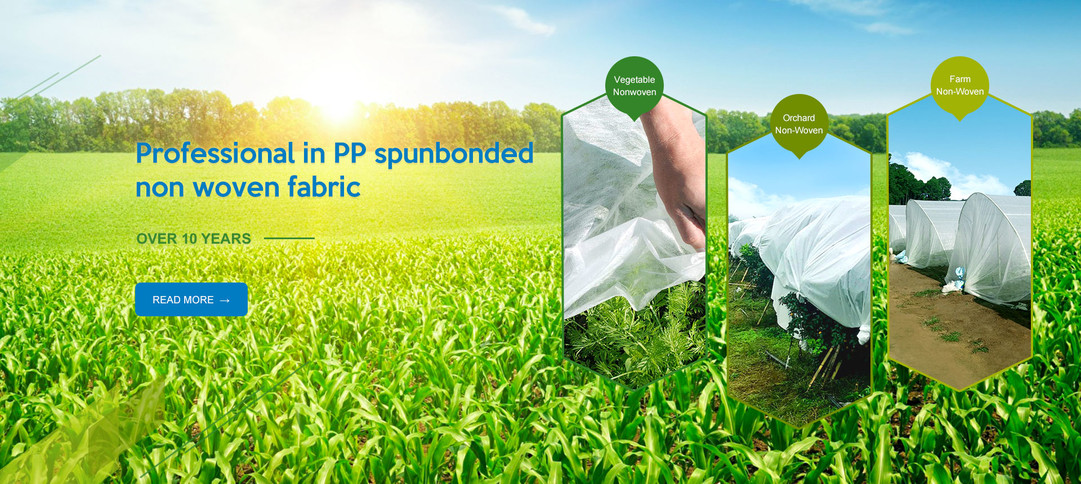
Non-Woven Industry development. Nonwoven fabric is a new product from the plastics and petrochemical industries following the introduction film. It is lighter than plastic cloth and provides better airflow. It is extensively used in medical and personal hygiene products, like filters, facial towels and sanitary napkins. Later, the technology was developed and then utilized in engineering. Non-woven fabric is utilized in vegetable production to guard against cold-related damage. The production process of non-woven fabric is different from plastic film, but the raw materials used are almost the same. It comprises PE (polyvinylchloride), EVA(Ethylene Vinyl Acetate Copolymer) EVA/polyethylene and PVA/polyvinylether. The traditional plastic film is made into a thin layer by melting the plastic and inflating it. Basically, the film is continuous; the material is able to stretch indefinitely. The film's surface is free of pores. It is an impermeable surface that hinders the movement and exchange any molecules. In the wake of the growth of the industry of textiles, artificial chemical fibers made from the mentioned raw materials have replaced most natural plant fibers and quickly became the most sought-after product of the textile industry. These chemical fibers are still made into cloth through the traditional process of warp and weft weaving. Non-woven materials are created by interspersing fibers on the same plane at various angles, in all directions, rather than using traditional warp and weft techniques. It has superior material properties over traditional woven fabrics. The manufacturing process can be finished from raw materials to final products in one step. This is an alternative to traditional weaving that calls for drawing in fibers. Recent years have seen an array of non-woven fabrics used in the apparel industry. Thanks to advances in material research and the development of production techniques, non-woven fabric has become more diverse and is being employed more frequently. We see the diverse types of materials and products used in each moment of our lives. The expansion of the use of non-woven fabrics in agriculture is mostly due to their lightweight, simple production, low-cost as well as their diversity and range of applications. Follow this non woven weed fabric for advice.

Applications of Non-Woven Fabrics in the Agricultural IndustryNon-woven fabrics were first introduced to the agricultural industry in Europe in 1978, to keep carrots warm for harvesting in the early hours, and also to prevent tomato leaf viruses and whiteflies. Non-woven fabrics are utilized in the United States for the mulching and protection of sweet peppers, tomatoes. root vegetables, carrots such as carrots. radishes. cabbage. lettuce. It is used mainly for heat preservation, early harvesting, and for insect control. Non-wovens can be used to cover grass-proof mats and increase soil temperature. Short fibers are used to create water-absorbing blankets that are placed on nursery beds to allow the roots to fully absorb water. They can also be used as a bottom substrate for turf production or directly used as garden grassland for drainage, moisturizing and even dividing the garden. They can also be used as planters to shield large woody plants, such as fruit trees or garden trees, and to hold in the moisture. Non-woven fabrics are also utilized in Taiwan for covering crops. They are also used extensively for environmental control in large greenhouses to save energy. Canopy curtains and double-layered curtains and canopy curtains to reduce heat and radiation loss at night. To shade and protect the bulbs of cauliflower, high-density nonwoven spun-bonded TAVIK fabrics were used. Its high shading capacity and low thermal conductivity as well as ease of recyclability made it a popular option for farmers. It was later used to protect leaf vegetables and insect-proof cultivation. Later, it was used for shading, heating, and preserve fruit trees and pineapples. Because of the unique climate and ecosystem of Taiwan and climate, the growth of the nonwoven industry has been slow. The nonwoven fabric producers in Taiwan continue to innovate in nonwoven technologies. This includes air permeability, water absorption, and water repellency. The focus is now on preservation and storage for agricultural products. Look at this wholesale agriculture non woven fabric for more information.
